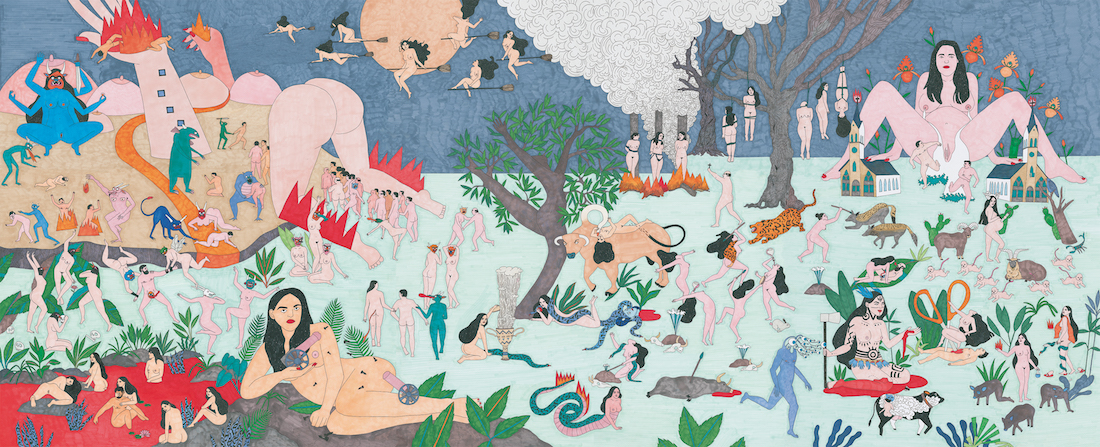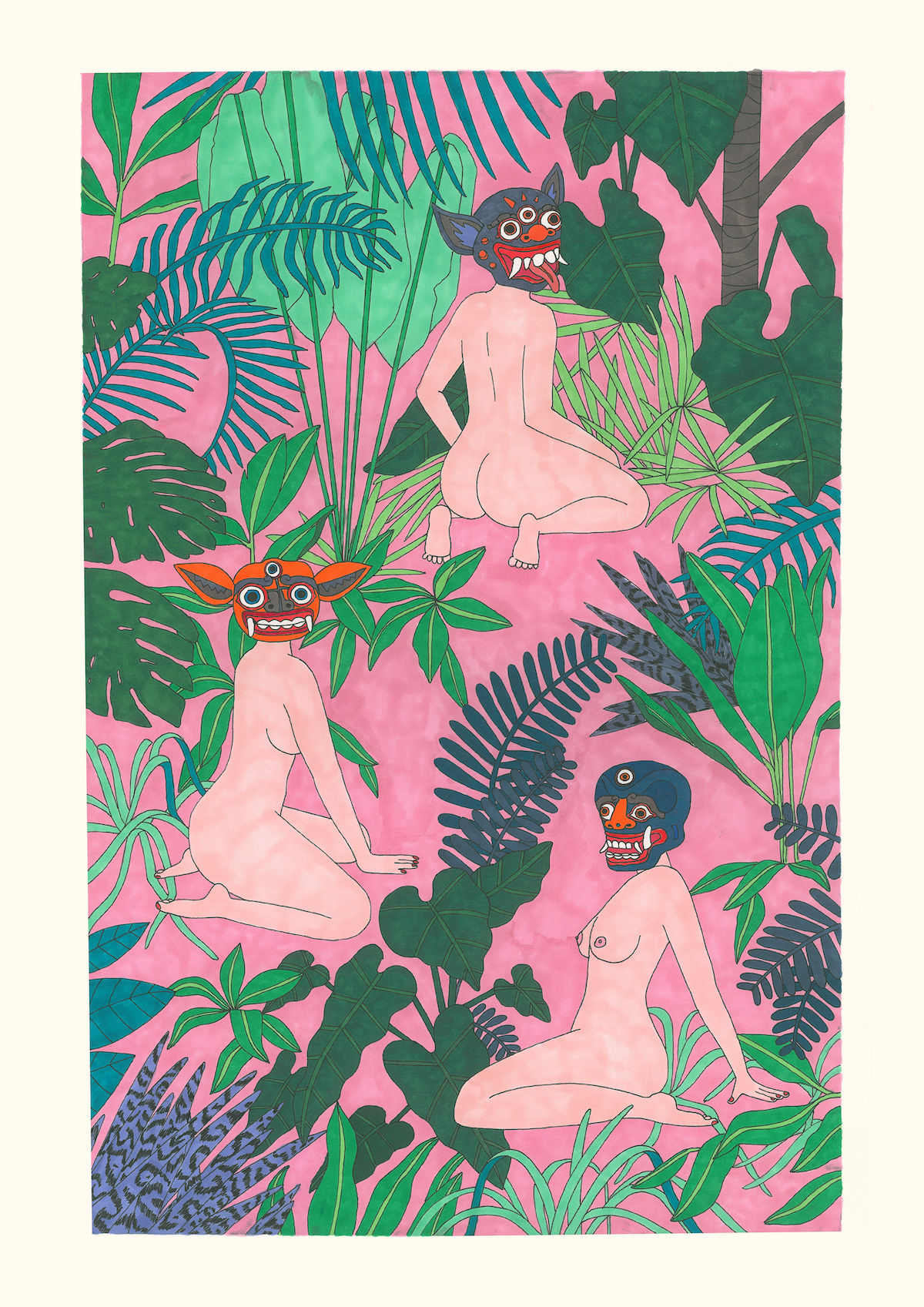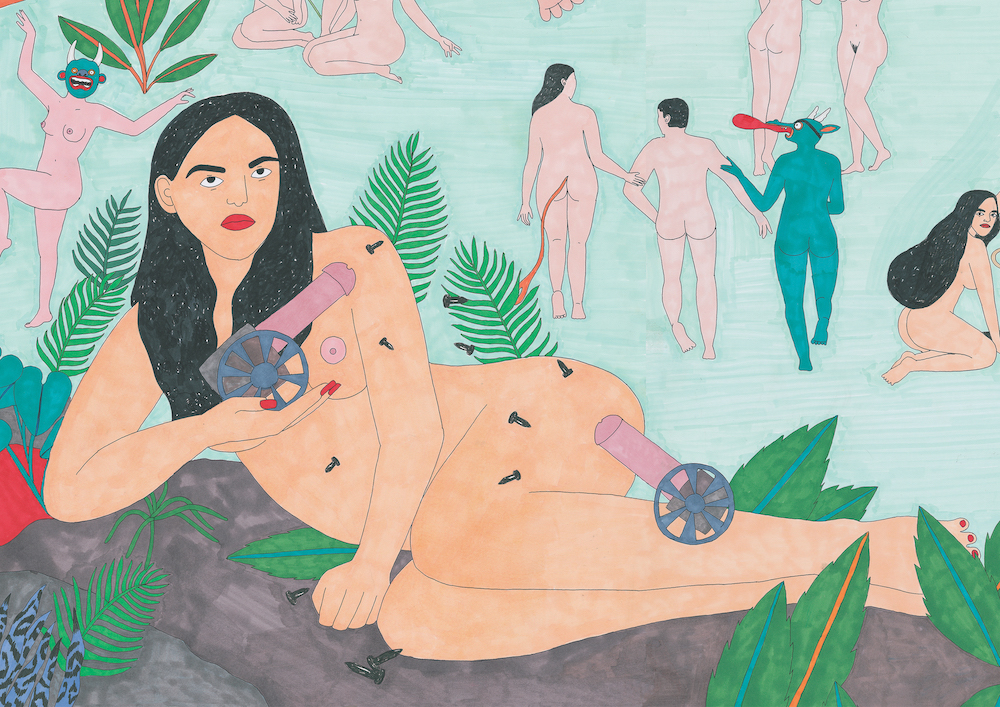
All images courtesy Alin Mor
Having recently graduated from the Bezalel Academy of Arts and Design in Jerusalem, Mor has exhibited in group shows such as The Other Walls at Shaar 3 Gallery in Haifa, where she showed Daughters of Eve earlier this year.
Can you tell me a little about the ideas behind Daughters of Eve?
The main subject I explored in Daughters Of Eve was women and femininity in western culture. The work was actually part of my final project at Bezalel Academy Of Arts and Design in Jerusalem, Israel, and the process of creating it was guided by Guy Sagee, a senior lecturer in the visual communication department.
After absorbing images of women from the media and dealing with the subject of femininity through art since childhood, as a woman myself, I wanted to understand why and how the main characteristics of the idealized woman came to be mostly related to seduction and sexuality.

Our culture is heavily based on religions, and whether we view ourselves as secular or not, the stories told in religious texts affect us individually and as a society, as they were and still are seen by some as some sort of guidelines to what being a human being means. Many religious myths and stories, from the story of Adam and Eve, through to Delilah cutting Samson’s hair and taking away his power, and Pandora, the first woman according to Greek Mythology who was created as a punishment to humanity, and many more, portray women as dangerous, manipulative and mostly define them by their sexuality or their relations to men.
We would like to think that this way of looking at the world is long gone, but when we look around, even in our so-called progressive western society, women are still seen through that same lens in magazines, porn, commercials, fashion etc. It is the same archetype of the seductive woman, now serving as a tool at the hands of corporations to promote products and aid their financial needs. The patriarchal repression and fear of women, which once was expressed by the church through burning witches at the stake, is still there. The work is a collage of the stories of those “bad” women.

Aesthetically the piece reminded me a little of Greek friezes—what visual influences did you have whilst creating it?
I can absolutely see why it reminded you of Greek friezes. Greek art was indeed a big influence and a source of inspiration in creating the piece. The process of making Daughters Of Eve included a visual research of how the stories were told before in art throughout recent history. It was a good way of learning about the stories aside from reading the original texts.
My visual influences varied from Classic art, Greek art and vases, middle ages, Renaissance and modern art. Hieronymus Bosch’s work in general, and The Garden Of Earthly Delights in particular, was a major reference point and inspired my description of the apocalypse predictions from Christian texts. Another reference is Dance by Henri Matisse, to tell the story of the raving maenads from Greek Mythology. I wanted to give a sense of timelessness by mixing references and visual influences from different eras to enhance the fact that the ancient stories are still relevant and that these misogynistic tales are mixed into our culture and the way women are perceived today.

You have used felt coloured markers, paint and collage in your work. What are your favorite materials to use?
My favourite materials are the ones you mentioned, acrylic and gouache paint. I really like working with a lot of colour. I usually start off by illustrating each character separately with graphite pencils, while having the idea of the whole scene in mind, then combine the different parts to create the composition and see how it all works together. My favourite materials to work with at the moment are markers and ink on paper.

You have illustrated books such as The Moon Princess and also created comics like Collision. Do you prefer to work with pre-existing narratives or create your own to illustrate?
I like working with pre-existing narratives equally to creating my own. As long as I feel like I’ve got something interesting or new to say about the subject and can relate to it in some way or another. The method with which I approach each project depends on the starting point and on the motivation behind making it. If the starting point is a certain subject I have in mind, doing comprehensive research before even starting to create anything will be a huge part of the process, which I really enjoy. Having pre-existing narrative takes off the responsibility that comes with creating a new one from scratch, or in gathering different narratives into a new one to say something new. Many times the starting point for me is just a feeling I want to convey and in that case the process is much more intuitive and the narrative is created as I draw.

Your work uses narrative to comment on political and social issues. What do you feel is the role of art in politics?
Throughout history art was often related to a revolutionary philosophy and a new way of viewing the world, and it has a major role in creating positive social or political change. Art is a language and creating it is often choosing to talk about something, whether intentionally or not.
I don’t consider myself a political person really, but I think we have a lot of blind spots in western society that need to be addressed. For me, art is one of the ways in which I can speak about matters that concern me and express my criticism of the way in which we operate as a global society, as humanity.






